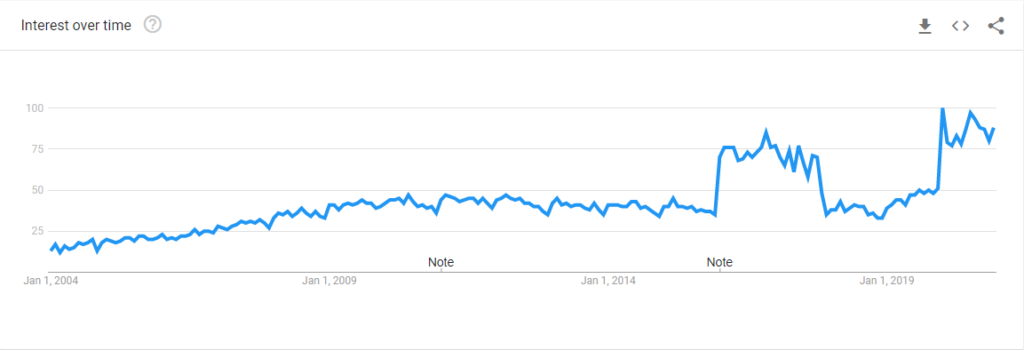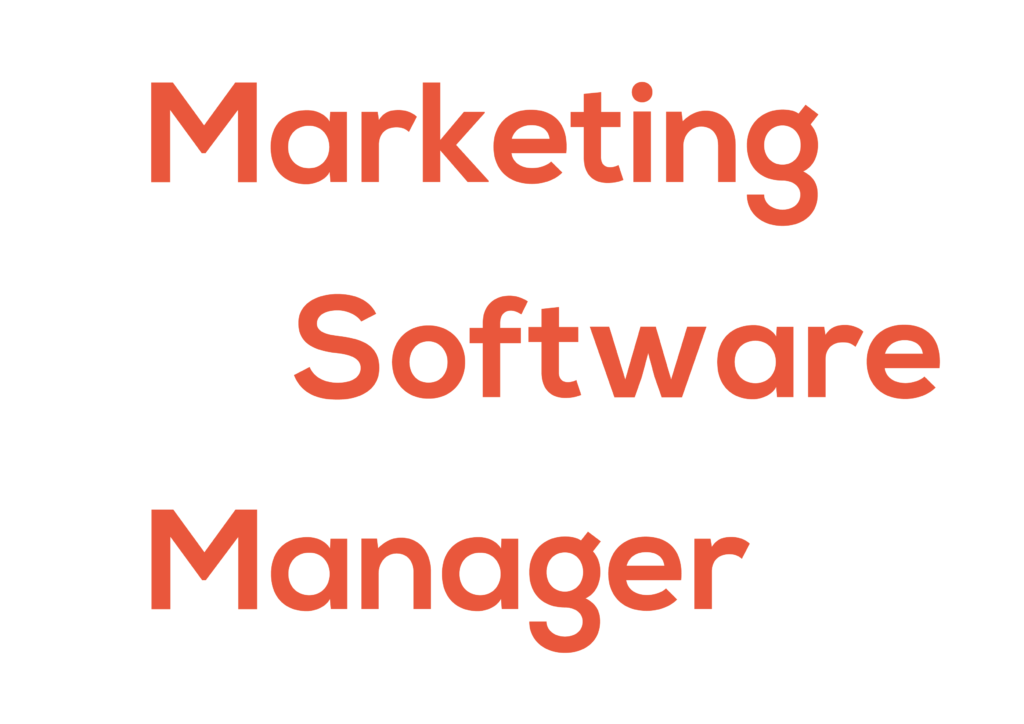When it comes to SEO research, 2020 has been something of a renaissance year for the misunderstood and likely most-important long-term digital strategy a business can look to deliver.
As the Coronavirus pandemic surged across the globe, many firms had to scale back their paid budgets to support spending in other areas of the business. With fewer pennies to spend on company marketing cards, many turned to free advertising opportunities. Creating great new content, trying new methods of email marketing and, of course, SEO.
Search engine optimisation has grown from something shady linkbuilders did in their bedrooms to the sole focus of entire departments. It’s no longer a dirty acronym, and general awareness of its importance and the basics that can help create well-optimised website are reasonably well understood.
What’s been interesting this year, as the below graph from Google Trends indicates, is that SEO is seeing another resurgence in interest. Why? Because, a lot of the time, it’s free. It can just require great content production and a thorough understanding of target keywords.

But, in my mind, many businesses are returning to organic search, or maybe introducing themselves to SEO for the first time, as 2020 has shown that websites which rank well in search results and can generate revenue from ‘free’ traffic are best placed to survive… and thrive.
What does any of this have to do with SEO research?
Predominantly, it’s about making a business case, or understanding how leveraging SEO can help balance falling clicks for websites that historically, and quite happily, relied on paid digital advertising to generate footfall and custom.
If available SEO research can back-up the case to invest more resource into it, that’s going to help firms for which the pandemic has dealt numerous brutal blows gain some online stability in the future.
So, let’s get into it:
Organic search presence matters for B2B
Insights from Google tells us that those involved in the B2B buying process are already 57% of the way down the path to a decision before they’ll actually perform an action on your website. Plus, nine in 10 B2B researchers who are online use search specifically to research business purposes.
For most firms within the business-to-business arena, this won’t particularly be news. Quite often our contact forms or sales follow-up process will capture that our website was found via Google.
But the key takeaway here in terms of SEO research is how far down the funnel prospects are travelling just via search engines, before engaging with your business in any other way.
So, whilst all those automated LinkedIn messages and social media campaigns may indeed get you somewhere – and it may be easier to directly relate that activity to an immediate sale or prospect enquiry – SEO is where your customers are typically turning to first when they actually need a solution.
In short, your organic rankings are picking up primed-to-buy traffic. They’re searching for your solution, whatever niche or industry you’re in, so you best make sure your website is one of the first ones they see when they click the Google search button.
Page one or nothing
You really could hide a dead body on page 2 of Google search results. That’s a long-used phrase in the SEO world, and it still rings true. Recent research from Backlinko shows how just 0.78% of Google searchers click on results from the second page.
But how do you know where your website currently ranks? Using SEO software is one way to track keyword research. But, just for now, try Googling what it is your customers might be searching for and see if your website appears!
Organic SEO is more effective than organic social
We’d all like to go viral (for the right reasons) once in a while, especially for our businesses. But most of the time that just doesn’t happen, and websites that try to rely on generating traffic naturally from posting across LinkedIn or Twitter may find their growth hits a plateau.
Why? Because according to BrightEdge, SEO drives 1,000% more traffic than organic social media on average.
Read more: 31 quotes about social media to get people talking
Why is that? Because organic traffic is cumulative. If you rank for 10 keywords that generate 100 clicks a month, you’re going to get 12,000 visits a year from those 10 terms. One organic tweet that gets 100 clicks, well, that’s great, but will that same tweet generate you 100 clicks month after month for years to come?
SEO traffic is highly valuable
Research from HubSpot here:
1 – 60% of marketers say that inbound (SEO and blog content, downloadables etc) is their highest quality source of leads, and
2 – SEO leads have a 14.6% close rate
As I mentioned in the intro, organic searches are often primed-to-buy. That means that people are searching for something they need, want to buy, or actively want to find out more about. That differs from, say, social or email marketing because through those mediums you’re trying to suggest to users that what you’re offering is what they need instead.
Backlinks (generally speaking) get rankings
How you get a page to rank on Google typically depends on two things; how well optimised a page is for a given keyword, and how many backlinks that page has.
Backlinks in the world of SEO is akin to a word-of-mouth recommendation. But instead of having five friends recommending a restaurant to you, it’s five websites linking to a restaurant’s website which suggests to search engine algorithms that the linked-to webpage must be trustworthy, have valuable content and be worthy of ranking highly in search results.
Research from ahrefs shows us that, generally speaking, the more backlinks a page has then the more organic traffic it will get from Google, and that most of the top-ranking pages gain backlinks from new referring websites at rate of 5-15% a month.
This is the snowball effect of SEO. If you can get ranking for one page, that one page should naturally pick up backlinks which will then support all your other pages (through increasing domain strength) to rank too, and they, in turn, will generate backlinks of their own.
But this is rarely a quick process. In fact, our final nugget of research – again from ahrefs – tells us that the average page in the top 10 of search results is at least two years old.
SEO research – final thoughts
Hopefully, there are enough insights there to get you thinking about SEO and how you can utilise it for your business – or at least make a solid business case to begin doing so!
SEO takes time and constant effort to start making an impact, but once you do, results really can start to snowball.
Searching for the best SEO software for your marketing team? Discover and compare the leading providers, including their functionality and pricing, all in one place right here.



